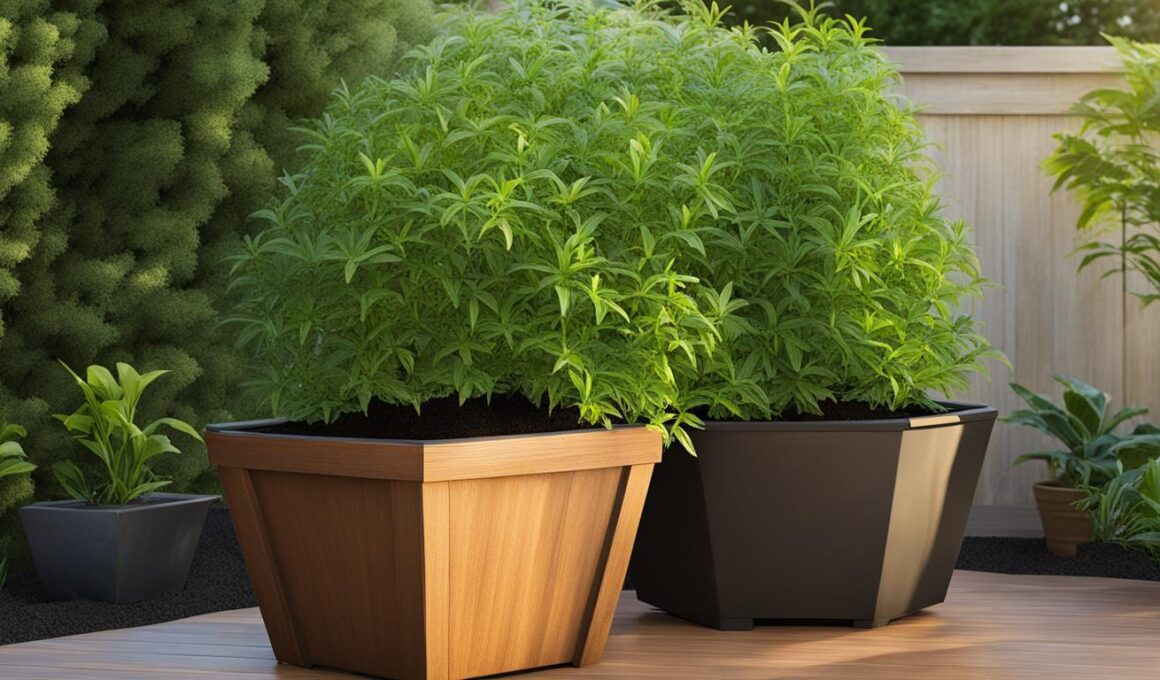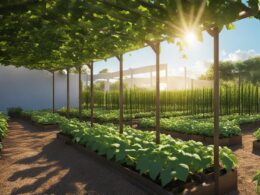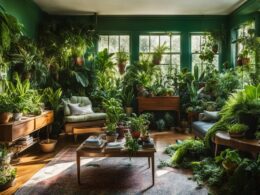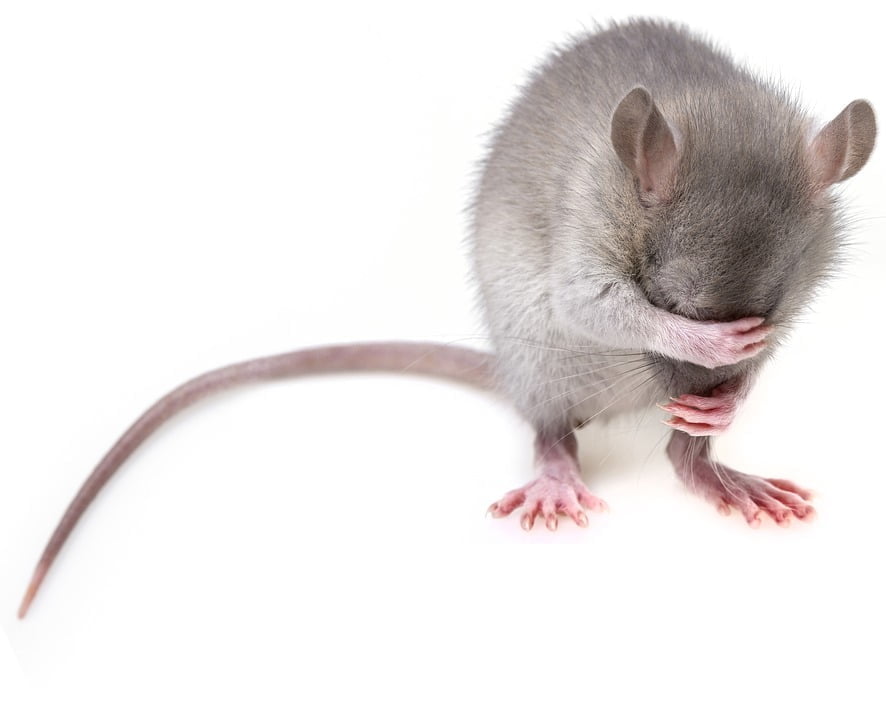Are you wondering how much soil you need to fill a 30 gallon pot? Look no further! In this article, we will delve into the world of pot sizes and volume, specifically focusing on the cubic feet measurement of a 30 gallon pot. Whether you’re an avid gardener or just starting out, understanding the amount of soil required for your pot is essential for successful plant growth. Let’s get started!
Key Takeaways:
- A 30 gallon pot has a cubic feet volume of 4.320.
- Knowing the volume capacity of your pot is crucial for determining the amount of soil needed.
- Consider factors such as the type of soil, amendments, and plant requirements when filling your 30 gallon pot.
- Successful gardening in a 30 gallon pot requires attention to watering, sunlight exposure, and soil moisture levels.
- Recommended plants for 30 gallon pots include fruit trees, large shrubs, and vegetables that require more root space.
Understanding Pot Sizes and Volume
Pot sizes can be confusing, with measurements varying between inches and gallons. GardenTap provides a pot size conversion chart that helps clarify these sizes. According to the chart, a 30 gallon pot is approximately 32.31 inches in diameter and has a volume of 4.320 cubic feet. Understanding these measurements can help determine how much soil you need for your 30 gallon pot.
Pot Size Conversion Chart
| Pot Size | Diameter (inches) | Volume (cubic feet) |
|---|---|---|
| 30 gallon | 32.31 | 4.320 |
| 20 gallon | 27.75 | 2.880 |
| 10 gallon | 21.16 | 1.440 |
As shown in the conversion chart, a 30 gallon pot has a diameter of 32.31 inches and a volume of 4.320 cubic feet. This means that you would need approximately 4.320 cubic feet of soil to fill a 30 gallon pot. Knowing the exact measurements of your pot can help you accurately calculate the amount of soil needed and avoid over or underfilling.
When it comes to selecting a pot for your plants, understanding the volume capacity is crucial. Different pot sizes can accommodate different amounts of soil, which directly affects the root space and overall growth of your plants. By referring to a pot size conversion chart like the one provided by GardenTap, you can easily compare pot sizes and make informed decisions when choosing the right pot for your gardening needs.
How to Calculate Soil Amount for a 30 Gallon Pot
Calculating the amount of soil needed for a 30 gallon pot is essential to ensure your plants have enough space to grow and thrive. By using a potting soil calculator, you can determine the exact amount of soil required based on the dimensions of your pot. Follow these steps to calculate the soil amount for your 30 gallon pot:
- Measure the diameter of the pot: Use a tape measure to determine the diameter of the top of the pot. For a 30 gallon pot, the diameter is approximately 32.31 inches.
- Measure the height of the pot: Measure the height of the pot from the bottom to the top rim. For a 30 gallon pot, the height is typically around 2.75 inches.
- Plug the measurements into the potting soil calculator: Use the dimensions you measured to input the diameter and height into the potting soil calculator. The calculator will then provide you with the exact amount of soil needed in cubic feet.
Keep in mind that the calculator takes the shape of the pot into account, so you can trust the accuracy of the soil amount provided. This way, you can avoid over or underfilling your 30 gallon pot and ensure optimal growing conditions for your plants.
| Diameter (inches) | Height (inches) | Soil Amount Needed (cubic feet) |
|---|---|---|
| 32.31 | 2.75 | 4.320 |
As shown in the table above, for a 30 gallon pot with a diameter of 32.31 inches and a height of 2.75 inches, the soil amount needed is 4.320 cubic feet. This measurement ensures that your plants have enough soil to establish their roots and access the necessary nutrients for healthy growth.
Different Pot Types and their Volume Capacities
When it comes to choosing pots for your plants, there are various types available, each with its own unique volume capacity. Understanding the volume capacities of different pot types is essential when determining the right size for your plants’ needs.
To help you make an informed decision, we have compiled a table showcasing the volume capacities of common pot types:
| Pot Type | Volume Capacity (Cubic Feet) | Volume Capacity (Gallons) |
|---|---|---|
| Plastic Container | Varies based on size and shape, typically between 0.5 – 2 cubic feet | Varies based on size and shape, typically between 4 – 15 gallons |
| Fabric Container | Varies based on size and shape, typically between 0.75 – 3 cubic feet | Varies based on size and shape, typically between 5 – 20 gallons |
| Terra Cotta Pot | Varies based on size and shape, typically between 0.25 – 1 cubic feet | Varies based on size and shape, typically between 2 – 8 gallons |
As you can see from the table, plastic containers and fabric containers generally offer larger volume capacities compared to terra cotta pots. This means that you can accommodate larger plants with more extensive root systems in plastic or fabric containers.
However, it’s important to note that the volume capacities mentioned in the table are approximate and can vary based on the specific dimensions and design of the pot. Always refer to the manufacturer’s guidelines or consult a gardening expert for more accurate information when selecting pots for your plants.
Factors to Consider When Filling a 30 Gallon Pot
When filling a 30 gallon pot with soil, there are several factors to keep in mind to ensure optimal plant growth and health. These factors can affect the overall success of your gardening efforts and play a crucial role in creating a suitable environment for your plants.
The Type of Soil:
Choosing the right type of soil is essential for filling your 30 gallon pot. Consider the specific needs of your plants and select a soil mix that provides the necessary nutrients, drainage, and pH levels. Depending on the type of plants you are growing, you may need a specialized soil mix such as potting soil, garden soil, or a blend designed for specific plant varieties.
Additions and Amendments:
It’s a good practice to add organic matter, such as compost or well-rotted manure, to enrich the soil and improve its structure. These additions can enhance the nutrient content and water retention capabilities of the soil, promoting healthy root development and overall plant growth.
Soil Compaction:
Consider the desired level of soil compaction based on the plants you are growing. Some plants thrive in looser, well-draining soil, while others prefer a more compacted environment. Adjust the soil compaction accordingly to meet the specific needs of your plants for optimal root growth and overall health.
By taking these factors into account, you can ensure that your 30 gallon pot is filled with the right type of soil, enriched with organic matter, and appropriately compacted for the plants you are growing. This careful consideration will provide a favorable environment for your plants and support their successful growth in the 30 gallon pot.
| Factors to Consider | Key Considerations |
|---|---|
| Type of Soil | Choose a soil mix that meets the specific needs of your plants. |
| Additions and Amendments | Enhance the soil’s nutrient content and structure with organic matter. |
| Soil Compaction | Adjust the level of compaction to meet your plants’ preferences. |
Tips for Successful Gardening in a 30 Gallon Pot
Gardening in a 30 gallon pot can be a rewarding experience. To ensure success, there are a few tips and considerations you should keep in mind.
- Choose the right plants: Select plants that are well-suited for growing in larger containers. Consider the mature size of the plants and make sure they won’t outgrow the pot. Fruit trees, large shrubs, and vegetables that require more root space are excellent choices for a 30 gallon pot. Citrus trees, tomatoes, peppers, and herbs are popular options.
- Provide adequate care: Pay attention to the specific needs of the plants you are growing in your 30 gallon pot. Ensure they receive the appropriate amount of water, sunlight, and nutrients. Regularly monitor the soil moisture levels to prevent over or under watering. It’s also important to provide proper drainage to avoid waterlogged soil.
- Support larger plants: Some plants may require additional support as they grow. Consider using stakes or trellises to provide stability for larger plants. This will help prevent them from toppling over or becoming damaged.
- Monitor soil health: Regularly check the condition of the soil in your 30 gallon pot. Make sure it remains well-drained and fertile. Consider adding organic matter or fertilizers to replenish nutrients as needed. This will help promote healthy plant growth.
Quote:
“Gardening in larger containers, like a 30 gallon pot, offers more space for plants to grow and thrive. By following these tips, you can create a successful garden and enjoy a bountiful harvest.”
Following these tips will help you maximize the potential of your 30 gallon pot and create a thriving garden. With the right plants, proper care, and attention to soil health, you can enjoy the beauty and bounty of your garden for years to come.
Recommended Plants for 30 Gallon Pots
When it comes to gardening in a 30 gallon pot, there are several plant options that thrive in larger containers. These plants require more root space and can produce bountiful harvests or stunning growth. Here are some recommended plants for your 30 gallon pots:
Citrus Trees
Citrus trees, such as lemon, lime, and orange, are well-suited for 30 gallon pots. They can add a touch of freshness to your garden and provide you with delicious fruits. Citrus trees prefer well-draining soil and require regular watering and sunlight exposure to flourish.
Tomatoes
Tomatoes are a popular choice for 30 gallon pots due to their prolific growth and ability to adapt well to container gardening. There are various tomato varieties available, including cherry tomatoes, beefsteak tomatoes, and heirloom tomatoes. Make sure to provide support for the tomato plants as they grow, such as using stakes or cages.
Peppers
Peppers, both sweet and hot varieties, thrive in 30 gallon pots. They require full sunlight and well-draining soil to produce healthy and flavorful peppers. Popular pepper varieties for container gardening include bell peppers, jalapenos, and habaneros.
Herbs
Herbs are perfect for 30 gallon pots as they are compact and can be easily grown in containers. Some popular herbs for container gardening include basil, parsley, mint, and rosemary. These herbs can enhance the flavors of your culinary creations while adding greenery to your garden.
Remember to consider the specific needs of each plant, including watering requirements, sunlight exposure, and proper drainage. With proper care and attention, you can create a thriving garden in your 30 gallon pots.
What Size Pot Should I Use for My Boston Fern to Maximize Growth in Cubic Feet?
When considering the best pots for Boston ferns to maximize growth in cubic feet, a 10-12 inch diameter pot is recommended for a medium-sized fern. Selecting a pot that allows for ample root space and proper drainage will support healthy growth. Keep in mind the fern’s specific needs and growth patterns when choosing a pot size.
Conclusion
In conclusion, a 30 gallon pot has a cubic feet volume of 4.320, according to the volume charts from GardenTap. Knowing the volume capacity of a 30 gallon pot can help you determine the amount of soil you need and make informed decisions when gardening in larger containers.
When filling your 30 gallon pot, it’s important to consider the specific needs of your plants. Take into account factors such as watering requirements, sunlight exposure, and proper drainage. This will ensure that your plants have the best chance of successful growth in your 30 gallon pot.
Remember to provide your plants with adequate care and monitor their soil moisture levels. Adjust as necessary to maintain optimal growing conditions. By understanding the volume capacity and considering the needs of your plants, you can create a thriving garden in your 30 gallon pot.
FAQ
How much soil do I need for a 30 gallon pot?
Approximately 4.320 cubic feet of soil is needed to fill a 30 gallon pot.
How do I calculate the soil amount for a 30 gallon pot?
You can use a potting soil calculator to determine the exact amount of soil needed based on the dimensions of your 30 gallon pot.
What types of pots are available for gardening?
There are different types of pots available, including fabric containers and plastic containers. The volume charts from GardenTap provide information on the cubic feet and gallons of different pot sizes.
What factors should I consider when filling a 30 gallon pot?
Factors to consider include the type of soil, any amendments or fertilizers added, and how compact you want the soil to be.
How can I ensure successful gardening in a 30 gallon pot?
Consider the specific needs of your plants, such as watering requirements, sunlight exposure, and proper drainage. Monitor soil moisture levels and provide adequate support for larger plants.
What plants are recommended for 30 gallon pots?
Fruit trees, large shrubs, and vegetables that require more root space are suitable for 30 gallon pots. Popular choices include citrus trees, tomatoes, peppers, and herbs.











